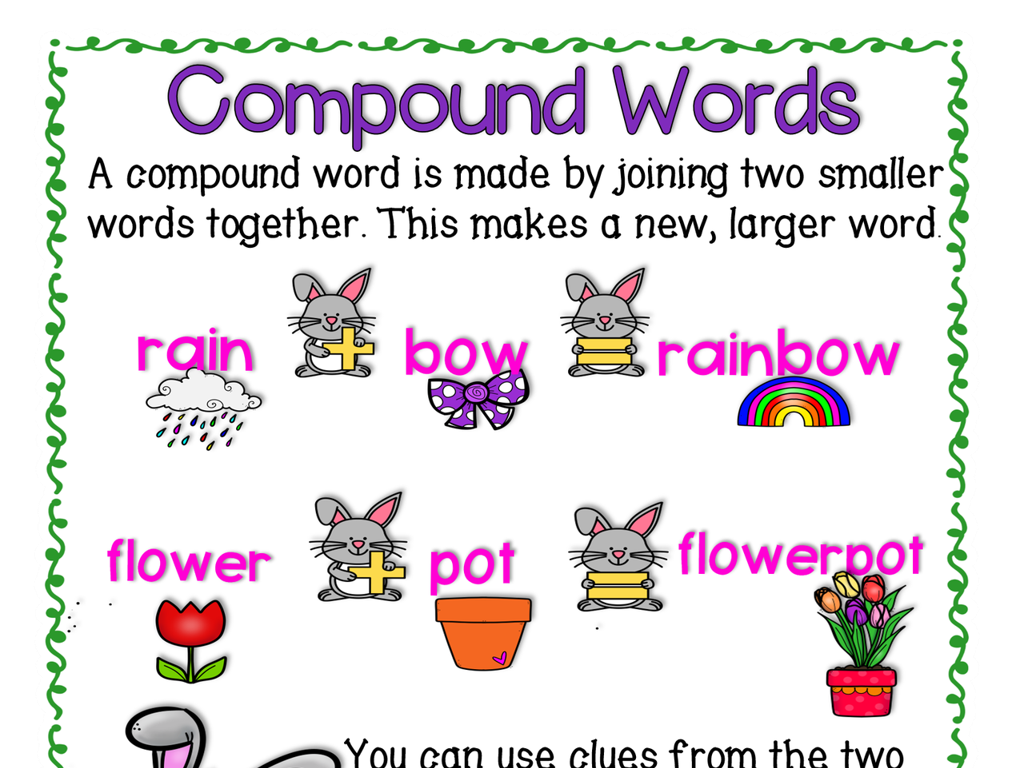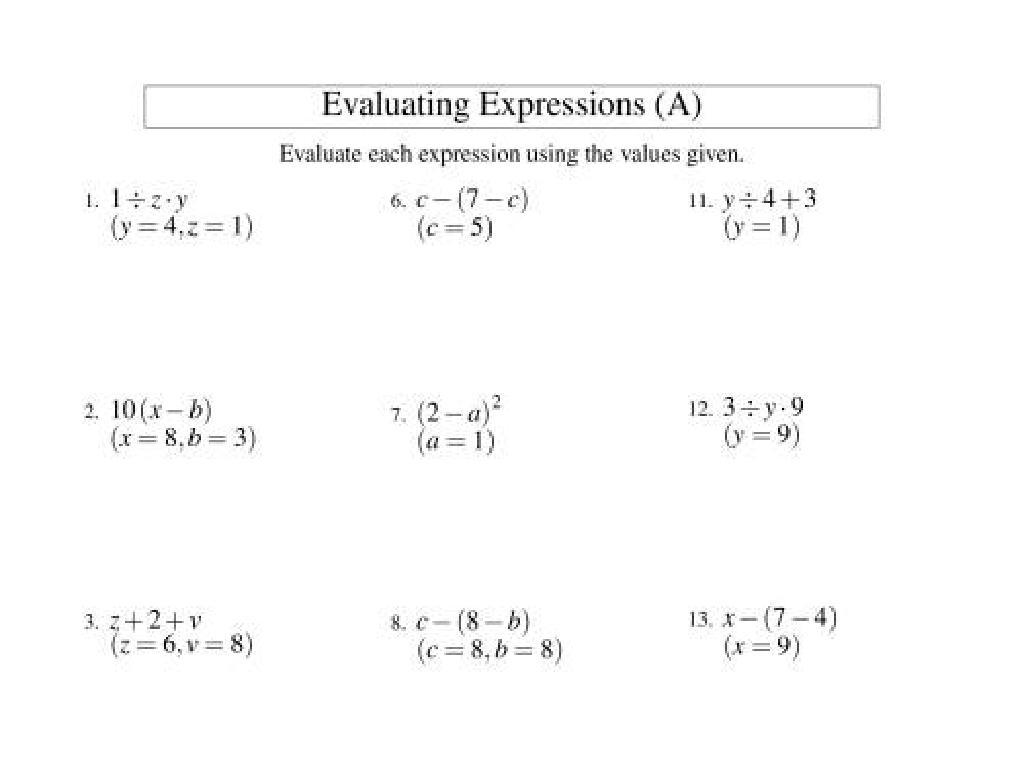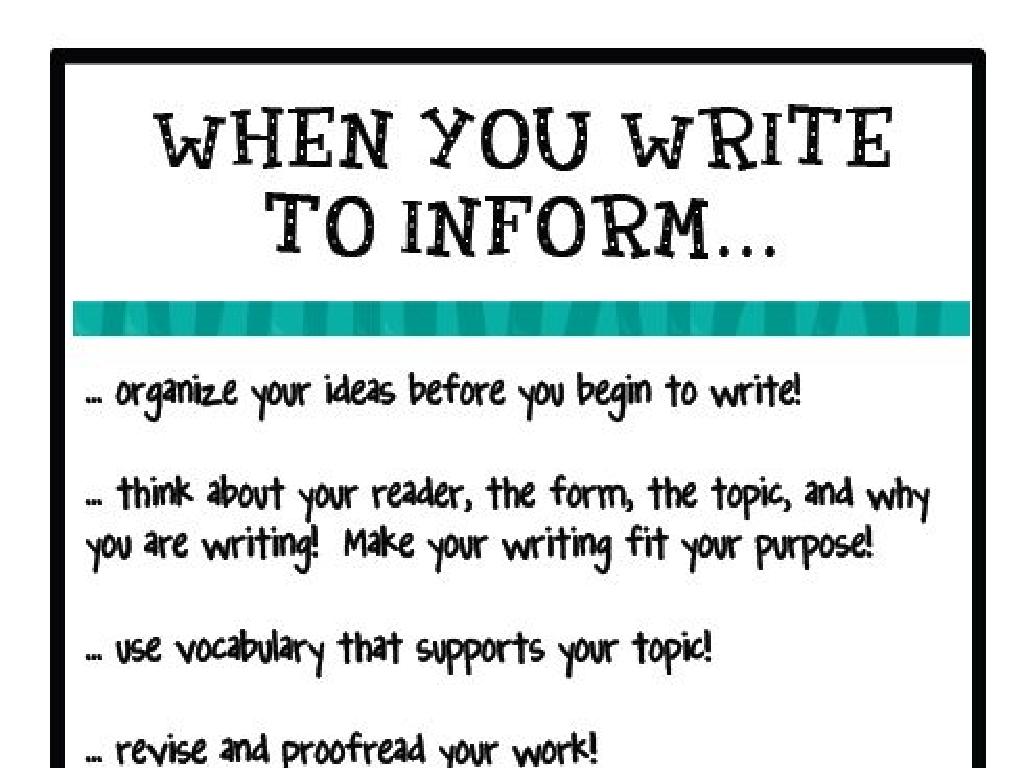Use Hyphens In Compound Adjectives
Subject: Language arts
Grade: Seventh grade
Topic: Dashes, Hyphens, And Ellipses
Please LOG IN to download the presentation. Access is available to registered users only.
View More Content
Mastering Hyphens in Compound Adjectives
– Understanding compound adjectives
– Adjectives made up of two or more words, e.g., ‘well-known’.
– When to use hyphens
– Use hyphens to avoid confusion, e.g., ‘small-business owner’ vs ‘small business owner’.
– Examples of hyphenated adjectives
– ‘Fast-paced game’, ‘full-time job’, ‘blue-eyed girl’.
– Practice makes hyphen heroes
– We’ll do exercises to become confident in using hyphens.
|
This slide introduces the concept of compound adjectives and the use of hyphens to link words together to describe a noun. Emphasize the clarity that hyphens bring to sentences, preventing misinterpretation. Provide clear examples to illustrate how hyphens change the meaning of phrases. Encourage students to think of their own examples and to practice with exercises. By the end of the lesson, students should be able to confidently use hyphens in their writing, enhancing their composition skills.
Understanding Hyphens in Compound Adjectives
– Define a hyphen
– A small line (-) that connects words to make a single idea
– Hyphen vs. dash
– Focus on compound adjectives
– Two words combined with a hyphen to describe something, e.g., ‘well-known artist’
– Usage in writing
– Enhances clarity, avoids confusion, e.g., ‘small-business owner’ vs. ‘small business owner’
|
This slide introduces the concept of hyphens and their specific use in compound adjectives. Begin by explaining what a hyphen is and how it differs from a dash in size and function. Emphasize that today’s lesson will focus on compound adjectives, which are two or more words joined by a hyphen to function as a single adjective. Provide examples to illustrate how hyphens can change the meaning of phrases and improve the clarity of writing. Encourage students to think of additional examples and to be mindful of hyphen usage in their assignments.
Mastering Compound Adjectives
– Define compound adjectives
– Two or more words joined to modify a noun
– Describe their function
– They express attributes or qualities
– Example: ‘well-known author’
– ‘Well-known’ modifies ‘author’ to show reputation
– Use hyphens correctly
|
This slide introduces the concept of compound adjectives to students, explaining how they are formed and their purpose in sentences. Emphasize that compound adjectives are hyphenated to avoid confusion and to clearly convey that the words work together as a single descriptor. Use the example ‘well-known author’ to illustrate how the hyphen connects ‘well’ and ‘known’ to modify ‘author’ collectively, indicating the author’s reputation. Encourage students to think of other examples and to practice using hyphens in compound adjectives in their writing. This will enhance their understanding of how to modify nouns effectively and improve their descriptive writing skills.
Mastering Hyphens in Compound Adjectives
– Hyphenate before the noun
– Use a hyphen when adjectives precede the noun they modify, e.g., ‘a well-known author’.
– No hyphen after the noun
– ‘Well-known author’ example
– ‘Well-known’ describes the author, hyphen connects the words.
– ‘The author is well known’ explanation
– When the description follows, no hyphen is used: ‘The author is well known’.
|
This slide aims to clarify the rules for using hyphens in compound adjectives for seventh-grade students. Emphasize that hyphens are used to link words together to form a single adjective that describes a noun, but only when they come before the noun. When the description follows the noun, hyphens are not needed. Provide clear examples to illustrate the difference. Encourage students to create sentences with compound adjectives both preceding and following nouns to practice the correct use of hyphens.
Let’s Practice: Hyphens in Compound Adjectives
– ‘well planned experiment’ needs a hyphen
– ‘well-planned’ describes the experiment, so it needs a hyphen
– ‘well planned’ does not need a hyphen here
– When ‘well planned’ comes after the noun, no hyphen is needed
– ‘chocolate-making factory’ correctly uses a hyphen
– ‘chocolate-making’ describes the factory, so it uses a hyphen
– Why do these sentences differ?
– Understanding placement and role in the sentence is key
|
This slide is an interactive class activity to help students understand the use of hyphens in compound adjectives. The first sentence requires a hyphen because ‘well-planned’ is a compound adjective directly describing the noun ‘experiment.’ In the second sentence, the phrase comes after the noun it describes, so it does not require a hyphen. The third sentence correctly uses a hyphen in ‘chocolate-making’ because it describes the factory. Encourage students to identify the compound adjectives and discuss why they do or do not need hyphens. Possible activities include having students create their own sentences using compound adjectives with and without hyphens, peer review of each other’s sentences, and a worksheet with similar examples for practice.
Hyphens in Compound Adjectives: Exceptions
– Not all compounds need hyphens
– Adverbs ending in -ly
– Adverbs that end in -ly, like ‘quickly’, do not need a hyphen when used in compound adjectives.
– No hyphen with -ly adjectives
– Example: ‘A quickly moving stream’ doesn’t need a hyphen between ‘quickly’ and ‘moving’.
– Recognize when to use hyphens
|
This slide addresses the exceptions in the use of hyphens with compound adjectives. It’s crucial for students to understand that while hyphens are used to join words to make a single adjective that comes before a noun, not all compound adjectives require a hyphen. Specifically, adverbs that end in -ly and the adjectives that follow them do not need a hyphen. For example, in the phrase ‘a beautifully written poem,’ there is no need for a hyphen between ‘beautifully’ and ‘written.’ Encourage students to look for these exceptions in their reading and practice identifying when hyphens are necessary and when they are not. Provide additional examples and exercises to reinforce this concept.
Class Activity: Hyphen Hunt
– Pair up for a hyphen scavenger hunt
– Find compound adjectives in print
– Look for two-word descriptors like ‘well-known artist’
– Determine the need for hyphens
– Decide if a hyphen clarifies, like in ‘fast-paced game’
– Share discoveries with the class
|
This activity is designed to help students recognize and correctly use hyphens in compound adjectives. By working in pairs, students will engage with printed materials to identify compound adjectives. They will then apply their knowledge to determine where hyphens are necessary to avoid ambiguity, such as ‘small-business owner’ versus ‘small business owner’, where the meaning changes with the hyphen. After the hunt, each pair will explain their reasoning for using hyphens in their examples. This peer-to-peer learning strategy reinforces the concept and prepares students for sharing their findings with the class, fostering a collaborative learning environment.
Mastering Hyphens in Compound Adjectives
– Recap: Hyphens join words
– Hyphens turn two words into one adjective, e.g., ‘well-known artist’
– Homework: Create 5 sentences
– Write sentences using hyphenated adjectives
– Use hyphenated compound adjectives
– Example: ‘The fast-moving stream was beautiful.’
– Share your work next class
|
Today’s lesson focused on the use of hyphens in compound adjectives, which are two or more words that come together to modify a noun and are connected by hyphens. For homework, students are tasked with writing five original sentences that include compound adjectives with hyphens. This exercise will help reinforce their understanding of how hyphens change the meaning of adjectives and how they are used in writing. In the next class, students will have the opportunity to share their sentences, allowing them to learn from each other’s examples. Encourage creativity and remind them to check that the adjectives they create make sense and are grammatically correct.





